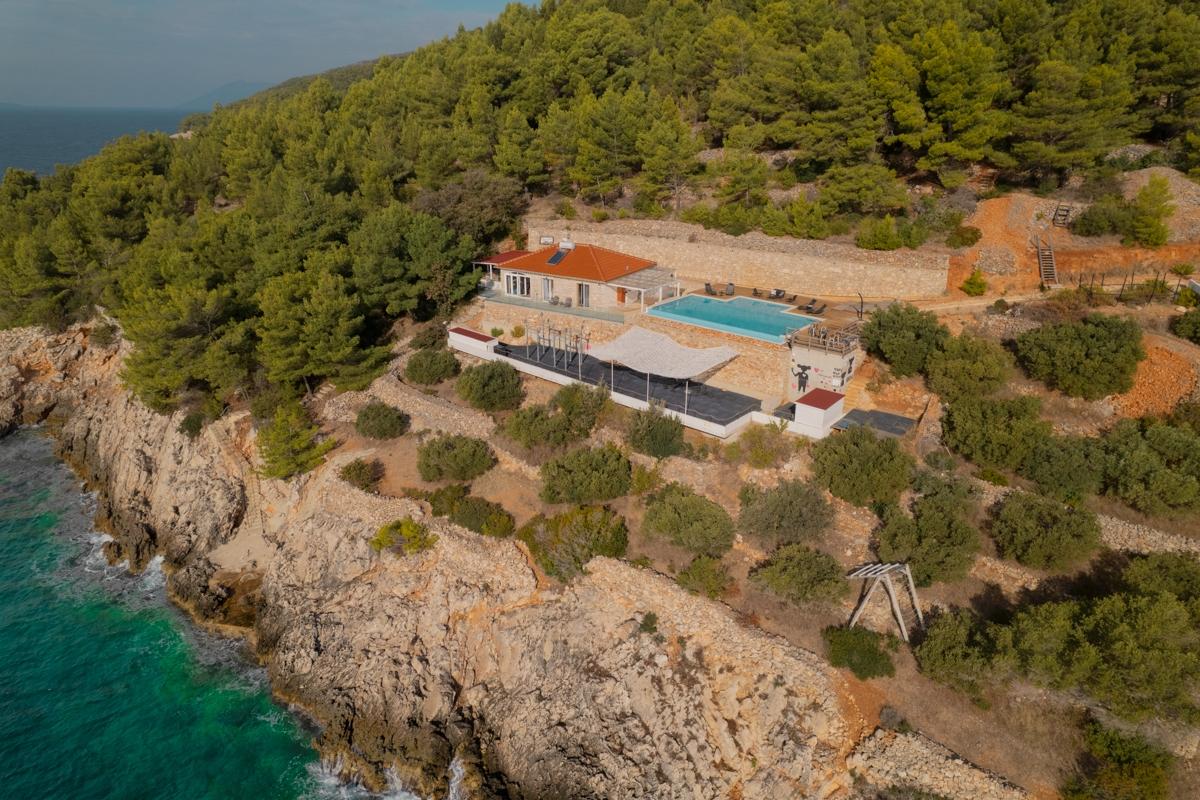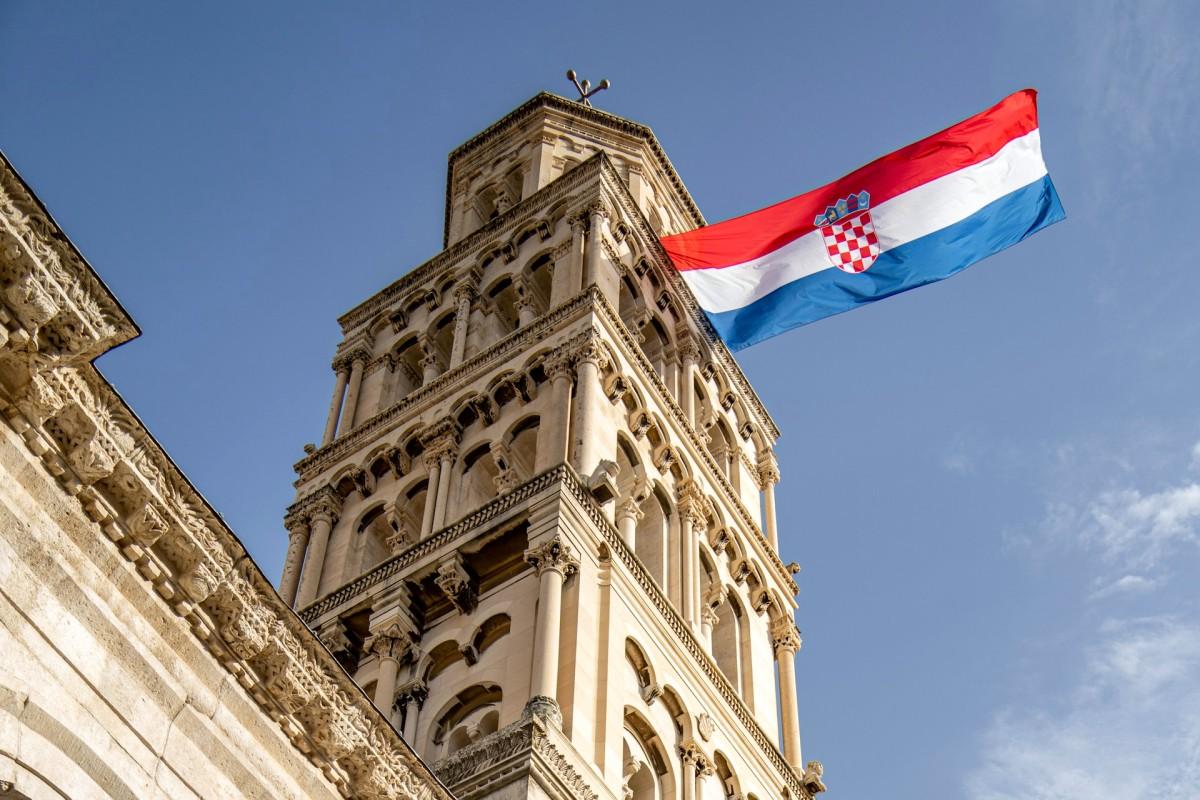Mar 28, 2025
The Secret of Successful Renovation of Old Stone Houses in Dalmatia
Zorana Barada
Client Relations and Promotion Coordinator

The story of a traditional Dalmatian house, the story is bigger than the architecture itself. The Dalmatian stone house is a picture of the coexistence of the Dalmatian man and the harsh nature and a symbol of life force and perseverance.
The style we will discuss is called Dalmatian-Mediterranean, and it is characteristic both for coastal cities and for the hinterland and islands. We can trace the development of this type of construction from the 18th century to the end of the Second World War, when it was slowly abandoned due to the use of new building materials.
Also, during the rapid urbanization that followed, the villages were depopulated, traditional stone houses left to the mercy of time. Their rediscovery came about as a result of the popularization of rural tourism, and they became recognizable as a potential.
The First Step – Real Estate Condition Assessment

In 2015, the Ministry of Tourism issued a manual for the renovation and tourism valorization of the traditional Dalmatian stone house, as part of the rural tourism development program. This fact indicates that the stone house is an important part of the cultural heritage and that its revitalization is of national interest.
In order to preserve the authenticity of the construction, it is important to pay attention to every detail during the renovation. However, before we start the actual renovation, we need to assess the condition of the property. The first thing we need to check is the foundations. On Dalmatian stone houses, the foundations are generally good.
After the foundation, it is important to check the quality of the walls, above all their strength and stability.
A common problem of old stone houses is moisture that arises due to the lack of waterproofing materials, which is why it often rises from the foundation along the walls. This problem is present in the majority of old houses, and the difference is only apparent in the scale of involvement.

Find Your Dream Old Stone House in Croatia
Ready to own a piece of history? Discover stunning old stone houses for sale in Croatia. Take the first step toward your dream property today!
Real estate in Croatia needs to take into account the original materials from which the house was built and consider replacing them. Here, we are primarily talking about wood as a construction material that was used in old houses for covering floors and as beams for raising roofs. The possibility of replacing the stone should also be considered, if it wears out over time.
It is also important to assess the condition of the installations, if they are installed in the house, and to consider the possibility of their complete replacement, given that these are often old and dilapidated systems.
Legal Aspects of Renovation – What You Need to Know?

Old stone houses form the identity of a region, especially in historically important areas like Trogir and Split and therefore their renovation should be approached carefully and in accordance with legal regulations.
Any change in the area should be carried out in accordance with the provisions of special laws, above all if it concerns interventions in areas that are protected as a cultural asset.
If it is a matter of restoring a cultural asset, the approval of the competent conservation office is required. In order to deviate from some requirements during renovation, it is necessary to obtain the consent of the Ministry.
Construction in rural areas of Croatia is regulated by spatial plans and not by higher instances, such as this is the case in some other countries and regions. This is one of the reasons for the large number of poorly executed renovations of Dalmatian old houses.
Choosing the Right Materials for an Authentic Look

Old Dalmatian stone houses are characterized by their adaptation to the environment and the use of natural materials, primarily stone and wood. Considering the use of materials originating from nature, these houses are often considered an example of ecological construction.
Their style has evolved over the centuries – from the potley to the noble house; however, they have always remained faithful to stone and wood. The walls of the more primitive and older houses were not connected with plaster, and the stone was poorly processed and uneven. In the later stages of development, plaster was made from sand or lime mixed with water, with a mixture of red earth. The roof was covered with tubs or stone slabs that were extracted from local coffee and did not require special processing.
Stone, as a building material, is extremely durable and long-lasting, easily available and perfectly reflects continuity and connection with the environment. On the other hand, the use of wood brings natural warmth and comfort to the space, making it pleasant to live in.
With their small windows and thick walls, Dalmatian houses ensured that they were comfortable to stay in during the winter and summer months.
How to Adapt Old Stone Houses to a Modern Lifestyle – A Combination of Tradition and Modernity
When renovating an old stone house, the priority must be to preserve authenticity and fit functionality into that same authenticity. Although we have the opportunity to revive a part of history, we must be aware that the unit we are renovating is not turning it into a museum but into a space for everyday living and living.

Traditional stone houses had an arrangement of floors and rooms that corresponded to the lifestyle of the time of their creation and which met the needs of their tenants. So, for example, the taverns were located on the ground floor, the rooms on the first floor, and the kitchen on the last – such an arrangement can be seen in numerous stone houses for sale in Omis and Primosten.
The layout of the rooms and floors will therefore be adjusted to our own needs and redistributed as we see fit.
We maintain the authenticity of the interior by highlighting two key elements, which are, as we have mentioned several times, stone and wood. It is recommended to highlight wooden beams as an original feature inside the room, as well as stone walls, completely or partially. Wooden elements should be treated according to their condition, replaced if necessary. The stone needs to be cleaned of dust and patina that has accumulated on it for decades.
We can add a touch of modernity by means of modern lighting that will fit elegantly and unobtrusively into the space. Likewise, modernity versus traditionality can be emphasized with the concept of an open floor plan that will unite the kitchen, dining room and living room. In this way, we will create a flowing and airy space adapted to the modern man.
A combination of classic furniture and modern technology can be the perfect choice for this room, which can be enriched with restored pieces of furniture made of solid wood. We recommend highlighting the stone wall in the living room, which would be preceded by a thorough cleaning. Such a wall will not only be a perfect frame for modern technology, but at the same time will tell the story of the history of the house.
Antique kitchens with the addition of modern kitchen equipment also work well in this environment. When decorating the dining room, we suggest the use of wooden materials, for example a wooden table and modernly designed chairs.
We recommend the use of neutral colors in the interior so that the traditional elements come to their full expression, and the space at the same time gains freshness and light.
The Most Common Renovation Mistakes and How to Avoid Them

The goal of the renovation, apart from bringing life back to the house, is to keep the autochthonous exterior and adapt the interior to the autochthonous expression. In order to make the renovation more successful, it is important to pay attention to possible mistakes before and during the execution of the works. The key is to carefully create a project and be guided by it, devote enough time to its creation, and slowly and carefully implement all our wishes and visions.
The legal aspects of renovation should not be taken for granted; rules and laws should be respected because they are structured to respect tradition. It is necessary to invest in excellent craftsmen, especially stonemasons, as well as good materials. By good material, we do not only mean quality, but preferably from the area where the house is located.
Mistakes related to interior decoration are mainly cluttering the space with unnecessary antiques and the discrepancy between the interior design and the whole story around the traditional old house.
When renovating the exterior, the consequences can be more serious because the identity of the house can be violated by inventing tradition or “importing” the same. If possible, avoid aluminum or PVC windows and other unnatural materials, as well as the introduction of urban elements into the traditional environment.
Esthetically poorly executed work, such as grouting with cement grout instead of lime mortar, is also a common mistake. Sometimes poorly executed works can be dangerous – for example, pouring a reinforced concrete slab on the roof can cause the static walls to crack.

Conclusion
The renovation of old stone houses in Dalmatia should be approached with extreme patience and care. It requires respect for tradition, laws and special rules in the renovation so that aesthetics and authenticity are not compromised.
From the initial assessment of the property’s condition, through the choice of materials, to the installation of modern functionalities, every step should be carefully planned and carried out with respect for history and local customs.
The biggest mistakes that can happen during renovation, such as using inappropriate materials or not following cultural guidelines, can seriously damage the identity of the house and its value.
If we devote enough attention, love and time to the renovation, we will get a comfortable home and the continuation of a long story about the history of a family or region.
Found this useful? Share with

Client Relations and Promotion Coordinator
Dedicated and hardworking individual known for her strong sense of responsibility and punctuality. A true workaholic, she consistently strives for excellence while maintaining a warm, empathetic, and approachable demeanor. Always eager to help and support her colleagues, she is highly valued for her kindness and collaboration. Outside of work, she has a deep passion for literature and enjoys long walks, which help her stay grounded and inspired.
Dedicated and hardworking individual known for her strong sense of responsibility and punctuality. A true workaholic, she consistently strives for excellence while maintaining a warm, empathetic, and approachable demeanor. Always eager to help and support her colleagues, she is highly valued for her kindness and collaboration. Outside of work, she has a deep passion for literature and enjoys long walks, which help her stay grounded and inspired.
Want to connect with us? We'd love to hear from you! Send us a message, and we'll get back to you shortly.



